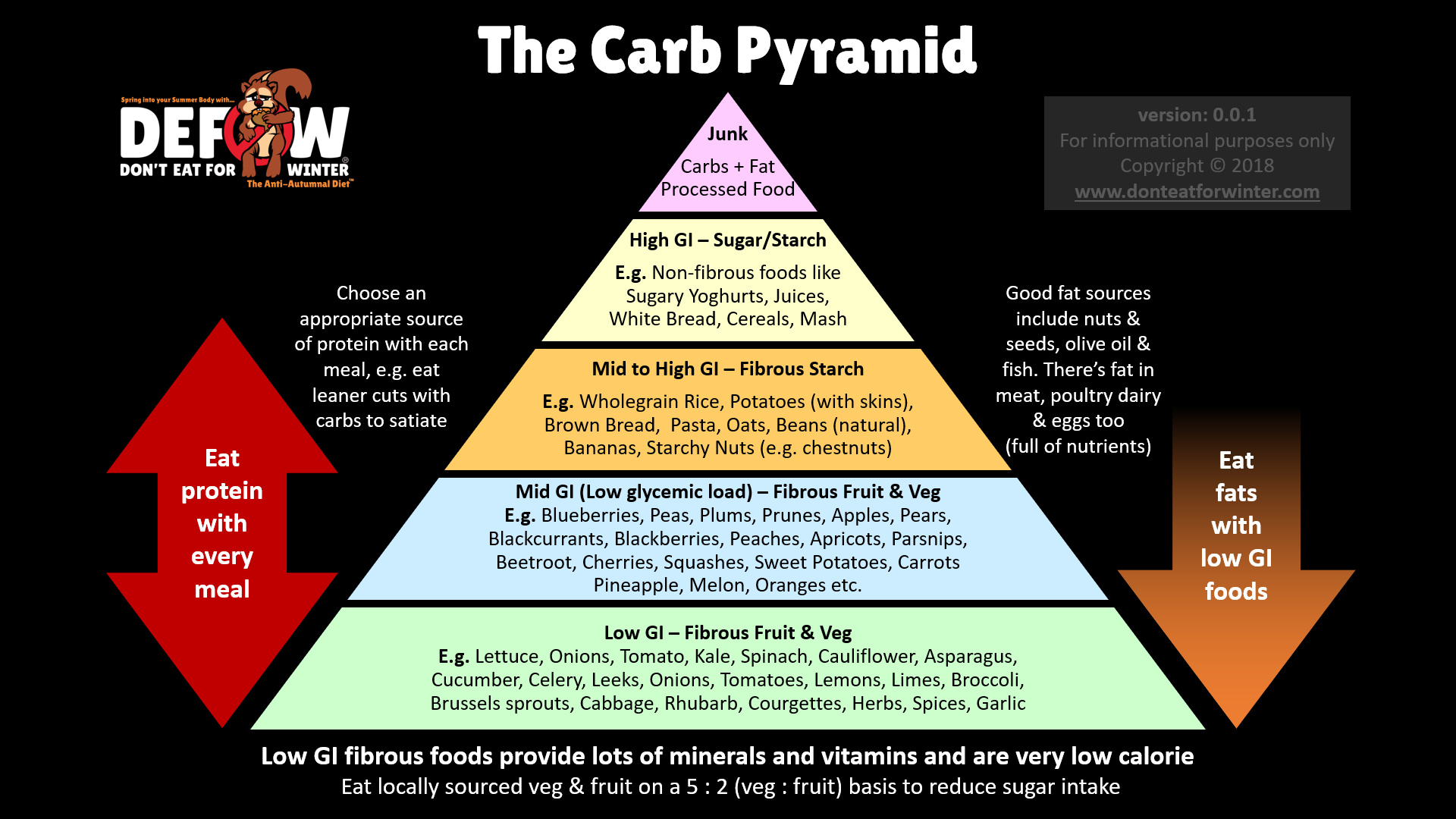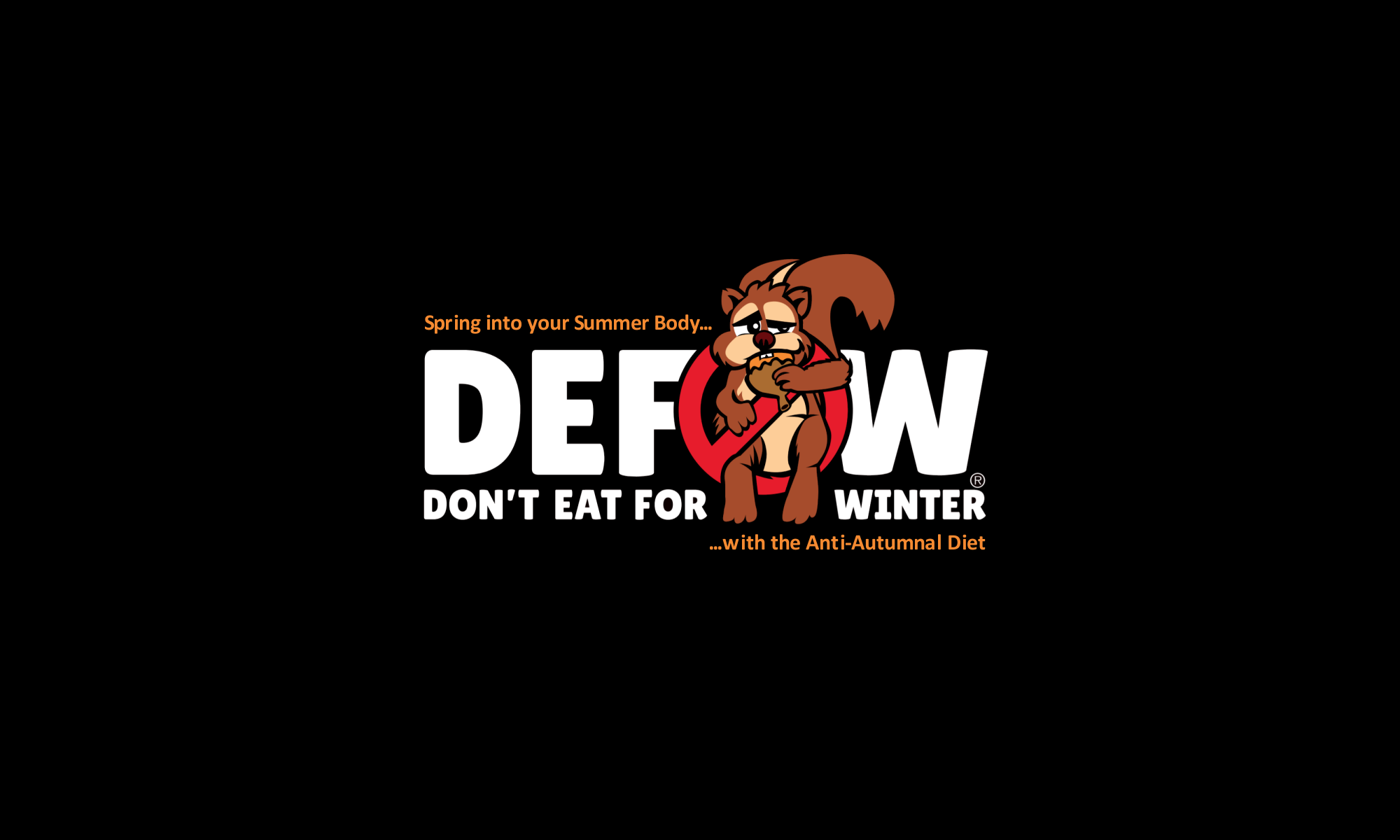I have always been a little frustrated with the food pyramid in terms of how carbohydrate heavy it is with all the harvest foods at the lower levels. It got me thinking about how it could potentially be improved to help people lower the amounts of sugar and starch in their diets holistically.
Governments and health organisations seem to be in denial that starch converts readily into sugar (a quick search for the top item on the glycemic index is quite shocking, have a look yourself when you’re finished reading this).
This seems obvious, but lots of people are missing this point:
Carbs harvest in a circannual cycle (as they rely on the sun) and so only exist in abundance in autumn.
There’s no starch in March.
As a result, I believe that starch and sugar are part of the formula that causes animals to gorge in preparation for winter.
Recently, the food pyramid was altered, and now vegetables and fruit appear on the bottom rung, which was a welcome move, however there are things like bananas and orange juice on that level which I think do not belong there as they have significant amounts of sugar/starch in them.
So, for what it’s worth, here is my own version of a food pyramid but rather than including staples like protein and fat in the pyramid itself (which are just as important as carbs in the diet if not more so), I’ve created the main pyramid to consider what types of carbs should be prioritised in the diet.

Click here to download The Carb Pyramid PDF
The Carb Pyramid Explained
The Levels:
- Junk appears at the top as normal and should be limited to occasional treats.
- Semi-processed foods where wholefoods have their skin removed, or there’s been sugar added.
- Typical carbs like potatoes and whole grains, where both the fibre (e.g. bran) is eaten with the food
- Fruit and Veg that have a high GI but a low glycemic load (i.e. you’d have to eat a lot more to get the same amount of carb as level 3)
- Finally, we have low GI fruit and veg which can be eaten in much larger quantities because there’s low amounts of sugar/starch
Fat and Protein Vectors:
The double arrow on the left means protein should be eaten with all levels (especially 3-5).
The fading arrow on the right means fats should be eaten with lower gi foods
Why avoid Carbs+Fat?
The key reason behind avoiding high carbs+fat is satiety. Recent studies have shown this combination is more valued by humans and can cause hormonal responses that drive greater reward signals to the brain and potentially addictive like behaviour. They also affect other hormones like ghrelin, leptin and insulin. For this, and various other reasons explained in Don’t Eat for Winter and on this website, this autumnal combination of simultaneous carbs+fat is limited in order to control appetite and retard potential fat storage.
The premise of DEFoW is that the spike of carbs in autumn, combined with fats, causes hyperphagia in the animal kingdom (we observe this with bears and squirrels and pigs fattening from things like acorns, which are the only wholefood in nature with a high carb+fat signature), and that this phenomenon could still be active in human beings. We are seasonally adapted creatures as we can develop a winter thermal layer of fat called brown adipose tissue that uses regular white fat as a fuel source. It therefore stands to reason that we would need to also store fat during autumn to survive winter, just like other animals in order to give us our best chance at making it through to the following spring.
Unfortunately in today’s world, we eat this autumnal combo in every single meal and snack (junk foods match acorns in an uncanny way), all year round, and so we are putting on weight indefinitely in anticipation of a winter that never happens.
Spring into your Summer Body with Don’t Eat for Winter…
…the Anti-Autumnal Diet
Latest posts by Cian (see all)
- The worst macro combination for fat loss - May 11, 2021
- Top 200 Most Fattening Foods (most autumnal) - March 19, 2020
- Is there such a thing as The Perfect Diet? - November 22, 2019
Submit your review | |
